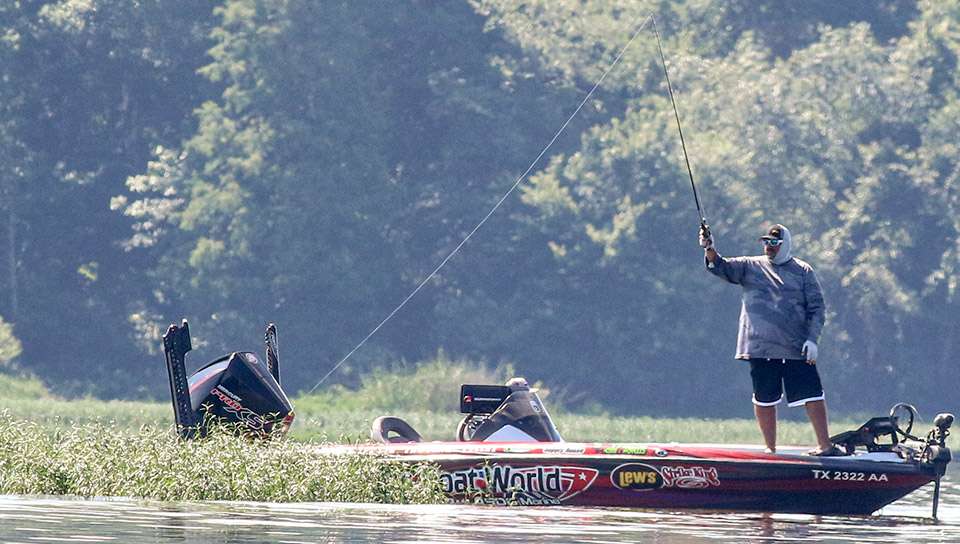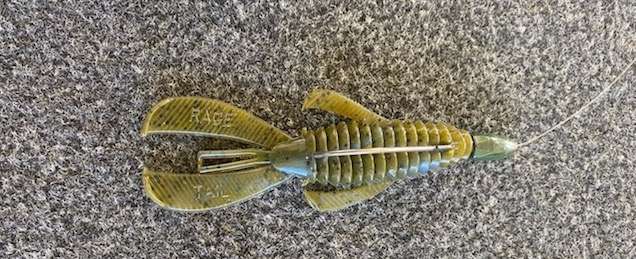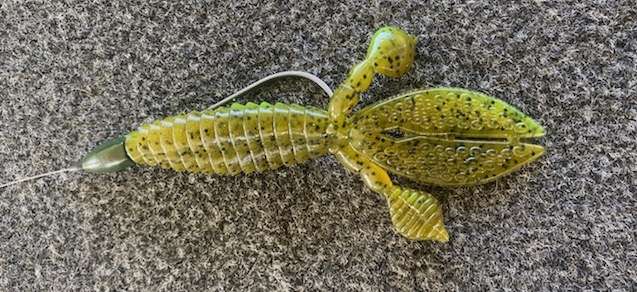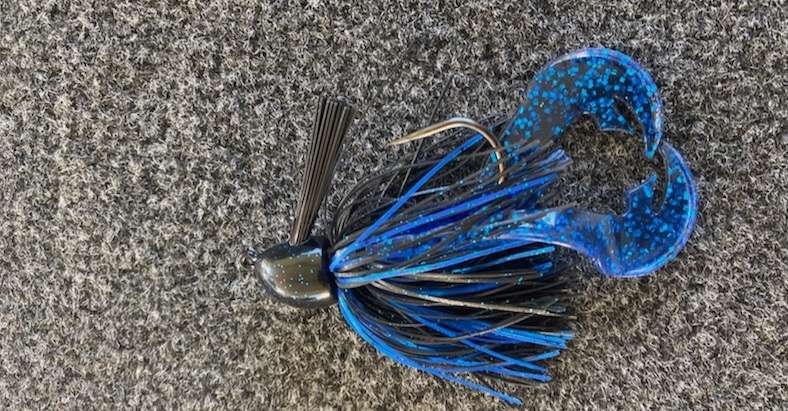
Frank Talley rarely starts his day flipping, but that implies no lack of value — just a systematic approach. Like following up an airstrike with ground troops, the Bassmaster Elite Series angler from Temple, Texas, has supreme confidence in cleaning up with targeted presentations once the fast movers have done their thing.
“I love to fish shallow, and I always start out with reaction baits. If I can’t get anything going on that, then I’ll slow down and flip cover out to about 7 feet,” Talley said. “What I try to do is pick off the easy fish with fast-moving stuff, then I’ll go to flipping to try and catch the remaining fish.
“A lot of times, you’ll catch the bigger fish by flipping, as opposed to a fast-moving bait. Also, weather changes make a big difference. You might have been catching them under cloudy conditions with a vibrating jig or a squarebill, and the next day, it’s bright bluebird skies with no wind. Then, flipping’s really going to shine.”
Talley, who notched his first Elite victory this year on Lake Guntersville, shared his top three flipping rigs and his insights for optimal performance.

Strike King Structure Bug — Using a pegged 1/4-ounce Strike King Tour Grade tungsten weight in shallow spring scenarios and a 5/16 the rest of the year, Talley rigs his bait on a 3/0 Owner Jungle Hook. His favorite color is blue craw, which he believes will produce in a range of water conditions from clear to muddy water.
“I like to look for scattered brush where fish are fairly active,” Talley said. “I like to see bream, especially if they’re bedding up shallow. That tends to help, because that bait mimics a bream really well.”
In these relatively close quarters, Talley stresses the importance of a stealthy presence. Minimizing boat noises and trolling motor surges helps, but he’s also very particular about strategic presentations.
“The biggest overlooked detail is presentation; no splash is so important,” he said. “Get as far away as possible from your target and make the lightest entry possible.
“When fish are up shallow, they get spookier. When you make a big splash with your presentation, nine out of 10 times, you’re gonna spook the fish off the piece of cover.”
Talley’s tip: Make a flip/pitch and right before the bait enters the water, raise the rod tip about 3 inches. This slows the bait’s momentum and allows it to feather into the water.
“You want to surprise the fish,” Talley said. “He’s sitting there, that bait drops down on him, he never heard it come into the water. It flutters down by his face, and his natural instinct is to just inhale it.

Strike King Rodent — Using this bait for warmer times, when water temps reach 75 or higher, Talley likes the summer craw color. He rigs his Rodent with a pegged 3/8- to 1/2-ounce Strike King Tour Grade Tungsten weight and a 4/0 Owner Jungle Hook.
“I like that bait for postspawn through summer,” Talley said. “I go to a heavier weight, because fish are a little more active, and I want something that gets a reaction bite.
“That bait has no (appendages) on its sides, so when it hits water, it falls straight down. The fish sees that bait go past them and their natural instinct is to inhale it without thinking twice.”

Strike King Hack Attack Heavy Cover Jig — Preferring a 1/2-ounce size in black/blue or green pumpkin — based on water clarity — Talley adds a matching Strike King Rage Craw.
“I’m a big believer in just keeping things super simple,” he said. “You get too many colors, and it becomes overwhelming. Just get a color that works well in clear, stained and muddy water.”
Talley’s tip: Take two segments off the top of the craw for a more compact form.
“I want the (pinchers) hanging just below the hook,” he said. “I don’t want to have it hanging too far down because it’s too bulky to flip with a full craw into cover.”
Two more adjustments. First, Talley removes four strands on the backside of the weed guard to lighten the barrier and improve hook penetration. The jig remains weedless because the outer edge is still full, but the pressure of a hook set causes the weed guard to easily compress.
Lastly, he’ll trim the jig’s skirt to 1/4 inch below the hook bend for a tighter profile. This modification makes the skirt flare better, while keeping the overall package more compact and easier to get in and out of cover.
Parting shots
Talley flips with a Lew’s Custom Light 7-2 Magnum Grass Rod Heavy and a 7.5:1 Lew’s Custom Ti reel. The only difference is his line choice: 25-pound Strike King Tour Grade fluorocarbon for his Texas rigs and 50-pound Strike King Tour Grade braid for the jig.
Whatever he’s flipping, Talley maintains a mindset of discipline; both in delivery and expectation.
“My mindset is when I pick up that flipping stick, I’m looking for a bite every 30 to 45 minutes,” he said. “I’m not looking to catch one after another, and I’m not discouraged if I only get one bite an hour.
“You have to work thoroughly. Sometimes, you flip in there and nothing, but you only have to flip a foot left or a foot right to get bit.”
Talley’s quick to point out that, while certainly an essential technique, flipping rarely makes his starting lineup. The reason: time management.
“I’ll flip over throwing a wacky rig or a shaky head, but in tournament competition, it’s hard to get in that (flipping) mindset,” he said. “You know you have eight hours to fish, and you know you have to get five bites. Flipping can be slow, so it’s hard to commit to the mindset of ‘slow down and the bites will come.’”
That said, rules rarely exist without exceptions. For Talley’s flipping order, he’ll often start a day with the big rod when spring finds the shallows overrun with plump fish in the prespawn to spawning mode — especially in river systems.
Case in point: “In 2018, I started out the Central Open on the Arkansas River flipping, and I ended up 12th. I did nothing but flip there because, even though I couldn’t see them, I knew the fish were up there around the beds.”
Time, place and tactics — the formula for success.





